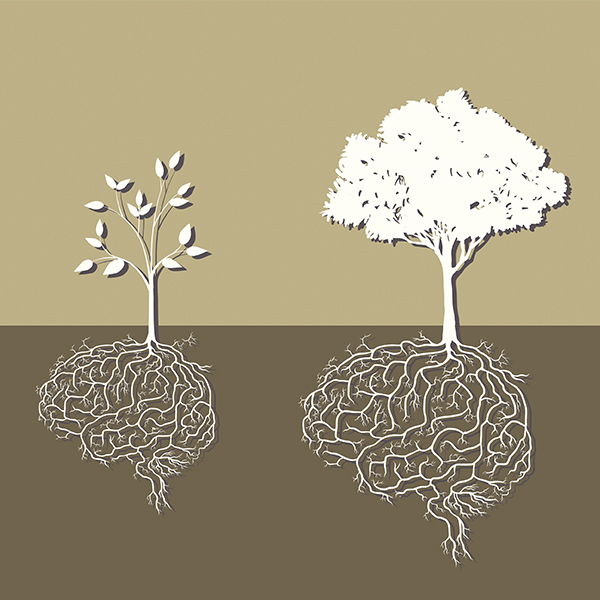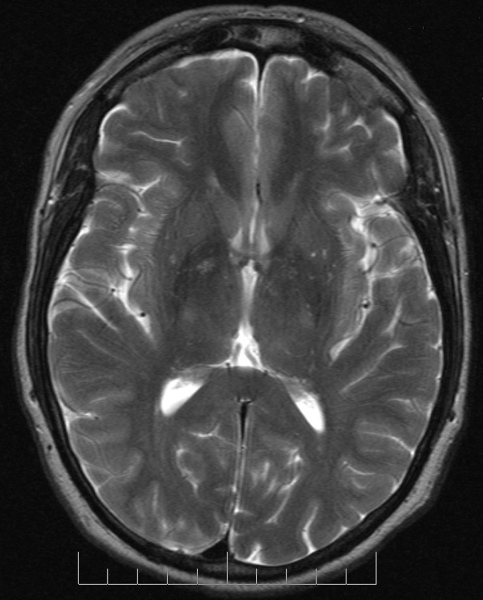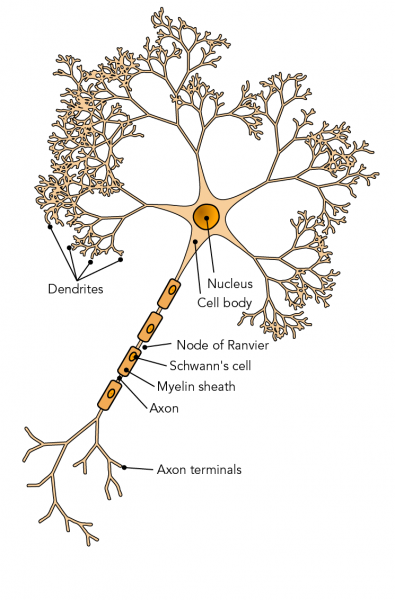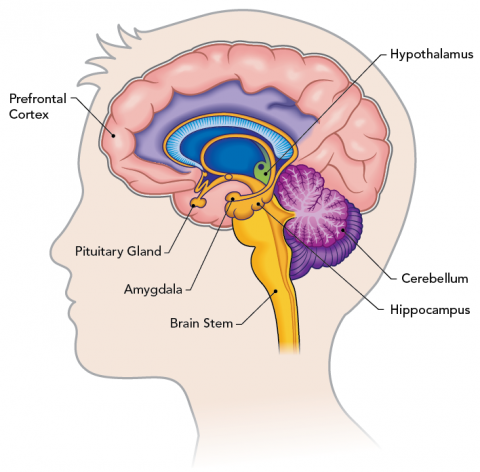Understanding the Teen Brain

Like trees, brains grow and develop (thanaphiphat, iStockphoto)

Like trees, brains grow and develop (thanaphiphat, iStockphoto)
How does this align with my curriculum?
| Grade | Course | Topic |
|---|
Teen brain development prepares teens for adulthood, but also affects their emotions.
“She’s a teenager, what do you expect?”
Why do adults say things like that? Is there something wrong with teenagers? What exactly is going on in the teenage brain? Between puberty and adulthood, people change dramatically. During this time, children mature and develop their own identity. They also become capable of living independently of their parents. This is crucial to the survival of the human species. If children never became adults capable of building their own lives and families, humans would die out pretty quickly. But be careful! The same changes tend to make you impulsive and reckless.
Growing up is a difficult process. So how is the human brain designed to navigate through this process?
How do scientists study the brain?
Not long ago, the human brain was hard to study. To look inside someone’s skull, doctors had to use high-energy radiation such as x-rays. But this type of radiation can be dangerous in high doses. That is why doctors only used them only when absolutely necessary. And ethically, researchers can’t risk making people sick just to look inside their heads.
However, things began to change in the 1990s. That is when Magnetic Resonance Imaging (MRI) arrived. MRI machines can take detailed pictures of the brain. There is no need for X-rays. They’re safe to use, even on children. Researchers can use MRI machines to see how different parts of the brain develop and communicate with each other over time. Thanks to MRIs, brain research is expanding fast. And scientists are getting a much better idea of what goes on in the teenage brain.

What goes on in the teenage brain?
The human brain is made up of many interconnected parts. Each of them has its own function. Different things you do—such as seeing, moving, smelling, feeling, or thinking—are run by different parts of the brain. And these different parts need to communicate with each other to coordinate their actions.
During childhood, each part of your brain is more focused on developing than on communicating with other parts. But at puberty, the focus shifts. The brain begins to improve its communication system.
What changes in the teenage brain help this communication system? Scientists think it’s the accumulation of a white, fatty substance called myelin. Brain cells (neurons) whose wiry extensions (axons) are wrapped in myelin communicate information faster and more frequently than cells without myelin. They are also better at coordinating with other brain cells. Myelinated cells form the brain’s white matter. White matter expands during the teenage years. This could explain why teenagers are so good at adapting and learning.

Illustration - Text Version
Parts of a neuron including the axon terminals, axon, myelin sheaths, Schwann’s cells, Nodes of Ranvier, cell body, nucleus and dendrites.
Did you know?
Some of the myelinated axons in your brain can transmit information at speeds of over 400 kilometres per hour!
However, your brain also has an unmyelinated portion. This is called the grey matter. The grey matter actually shrinks in the teen brain. This is surprising, since grey matter contains synapses. These are the structures that your brain cells use to connect with each other. So how could cutting down on the number of synapses help your brain mature?
Don’t worry, the teenage brain is not getting rid of important material. Rather, it seems to simply be cleaning house. During childhood, your brain forms synapses easily. It builds up a lot of them as the amount of grey matter grows. But the teenage brain must become more effective. It also must become more specialized. To do this, it gets rid of unused or broken synapses. This process is called pruning. The brain also strengthens the ones synapses it often uses. The result is fewer but better connections. In other words, the result is a more mature brain!
How does the teenage brain affect behaviour?
The different parts of the brain don’t all get upgraded at the same time. This helps explain why teenagers are often impulsive and reckless. The area in charge of emotions is called the limbic system. It matures early. The area of the brain that regulates behaviour and the ability to make decisions is called the prefrontal cortex. It matures much later. In fact, it’s the last part of the brain to mature. The prefrontal cortex isn’t considered fully developed until a person is in their mid-to-late 20s! Instead, teenagers process information with the amygdala. This is a part of the limbic system. It’s the reason why teenagers may sometimes have deep, complex emotions that they cannot fully control.

Is there a purpose to this? Some scientists believe that the development of the teenage brain is an evolutionary one. For many teens, leaving home feels risky. Let’s assume teenagers’ capacity to judge risks and consequences is fully developed. Would it be as easy to get them to leave the security of their parents’ homes and explore new territories? Probably not. This may be why emotions override judgment in the teenage brain. It pushes them out of their comfort zone and into the unknown, while their brains are still highly adaptable and have lots of room to improve.
The teenage brain may not be fully mature. But it is up to great things! The potential for learning and creativity is at its peak. But so is the risk of physical injury and mental illness. But it’s empowering to understand what’s going on up there, isn’t it?
Starting Points
- Think of a situation when you acted impulsively and got in trouble. What is the worst that could have happened?
- Have you ever gotten emotional over something but later wondered why you felt or reacted as strongly as you did? Explain.
- If someone told you “you’re a teen and can’t be trusted,” how would you respond?
- We live in a world of fast change and hyper-connectivity. Does this fit the teen brain better than the adult brain? Explain.
- The first signs of mental illness often show up during adolescence. What could be the reason for this?
- In light of our current scientific understanding of the teen brain, should changes be made in how schools operate? Explain.
- What does a brain cell look like? How does it communicate information? How does myelin affect the action of a brain cell?
- Why is puberty an important time in terms of human brain development?
- What parts of the brain are involved in determining your behaviour? How do these parts of the brain interact?
- Why can teenagers be more emotional and susceptible to risk-taking and peer-pressure?
- When we mature, we move away from our parents and are attracted by unfamiliar things and people. How does this benefit our species?
- How did the development of magnetic resonance imaging (MRI) technology influence our understanding of the human brain?
- Are the ways teens are portrayed in popular media accurate or do they create stereotypes? Explain.
- Teens are the most enthusiastic users of digital media. What are the benefits and the risks?
- This article and embedded video can support teaching and learning of Biology, Anatomy and Health related to the nervous system and human development. Concepts introduced include brain, radiation, x-rays, Magnetic Resonance Imaging (MRI), myelin, axons and synapses.
- The embedded video uses a lot of anatomical terminology. Before watching the embedded video, teachers could provide students with a Vocabulary Preview to help engage their prior knowledge and introduce new terminology. Ready-to-use Vocabulary Preview learning strategy reproducibles are available in [Google doc] and [PDF] formats.
- After reading the article and viewing the video, teachers could have students consolidate their reading/viewing comprehension and practice their questioning skills using a Question-Answer-Response (QAR) learning strategy. Ready-to-use Question-Answer-Response (QAR) reproducibles for this article are available in [Google doc] and [PDF] formats.
Connecting and Relating
- Think of a situation when you acted impulsively and got in trouble. What is the worst that could have happened?
- Have you ever gotten emotional over something but later wondered why you felt or reacted as strongly as you did? Explain.
- If someone told you “you’re a teen and can’t be trusted,” how would you respond?
Relating Science and Technology to Society and the Environment
- We live in a world of fast change and hyper-connectivity. Does this fit the teen brain better than the adult brain? Explain.
- The first signs of mental illness often show up during adolescence. What could be the reason for this?
- In light of our current scientific understanding of the teen brain, should changes be made in how schools operate? Explain.
Exploring Concepts
- What does a brain cell look like? How does it communicate information? How does myelin affect the action of a brain cell?
- Why is puberty an important time in terms of human brain development?
- What parts of the brain are involved in determining your behaviour? How do these parts of the brain interact?
- Why can teenagers be more emotional and susceptible to risk-taking and peer-pressure?
- When we mature, we move away from our parents and are attracted by unfamiliar things and people. How does this benefit our species?
Nature of Science/Nature of Technology
- How did the development of magnetic resonance imaging (MRI) technology influence our understanding of the human brain?
Media Literacy
- Are the ways teens are portrayed in popular media accurate or do they create stereotypes? Explain.
- Teens are the most enthusiastic users of digital media. What are the benefits and the risks?
Teaching Suggestions
- This article and embedded video can support teaching and learning of Biology, Anatomy and Health related to the nervous system and human development. Concepts introduced include brain, radiation, x-rays, Magnetic Resonance Imaging (MRI), myelin, axons and synapses.
- The embedded video uses a lot of anatomical terminology. Before watching the embedded video, teachers could provide students with a Vocabulary Preview to help engage their prior knowledge and introduce new terminology. Ready-to-use Vocabulary Preview learning strategy reproducibles are available in [Google doc] and [PDF] formats.
- After reading the article and viewing the video, teachers could have students consolidate their reading/viewing comprehension and practice their questioning skills using a Question-Answer-Response (QAR) learning strategy. Ready-to-use Question-Answer-Response (QAR) reproducibles for this article are available in [Google doc] and [PDF] formats.
Learn more
The Teenage Brain Explained (2014)
Video (10:06 min.) from SciShow explaining the development of the teenage brain and the influence of hormones on brain development
References
Coghlan, A. (2016, July 25). Revealed: The teenage brain upgrades that occur before adulthood. NewScientist.
Fetterman, A., Campellone, J., & Turley, R. K. (n.d.). Understanding the teen brain. University of Rochester Medical Center.
Hines, T. (2018, April). Anatomy of the brain. Mayfield Brain & Spine.
National Institute of Mental Health. (n.d.). Publications about brain anatomy and physiology.
Shiel Jr., W. C. (2018, March 7). What are the uses for an MRI? MedicineNet.